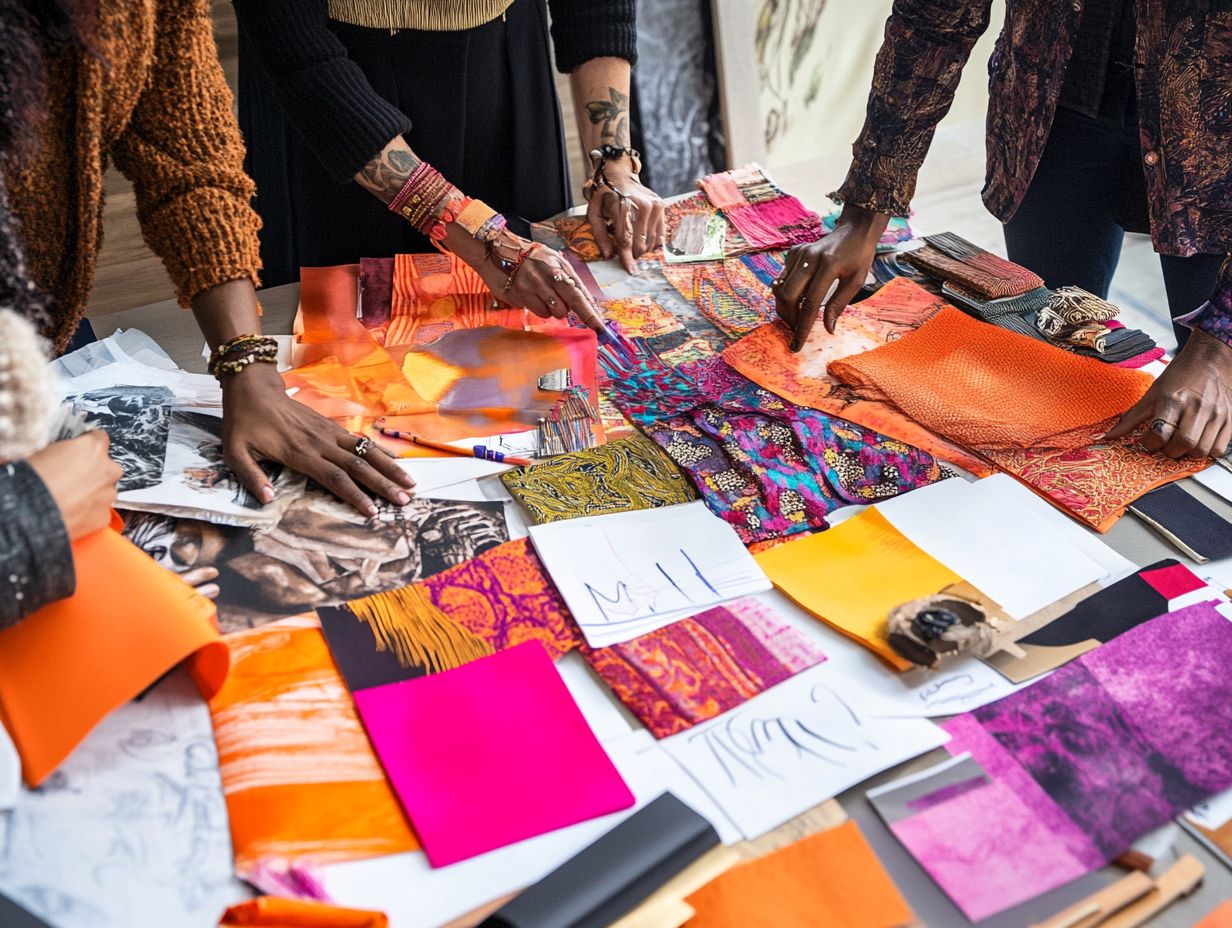How to Incorporate Cultural Practices in Design
Design goes beyond mere aesthetics; it serves as a powerful medium that reflects and shapes cultural identities.
In a world where globalization connects diverse cultures, understanding and using cultural practices in your design is essential, particularly when recognizing cross-cultural differences. This exploration highlights the significant impact of culture on design, showcasing traditional elements and symbols that can enhance your creative projects.
You ll also find practical tips for collaborating with cultural experts and navigating the complexities of cultural sensitivity.
Join us on this exciting journey to enrich your designs while honoring the cultures they represent.
Contents
- Key Takeaways:
- The Importance of Cultural Practices in Design
- Examples of Cultural Practices in Design
- Tips for Incorporating Cultural Practices in Design
- Potential Challenges and How to Overcome Them
- Frequently Asked Questions
- 1. How can cultural practices be effectively incorporated into design and what design strategies should be considered?
- 2. Why is it important to incorporate cultural practices in design?
- 3. How can I research cultural practices for my design project?
- 4. Can cultural practices be incorporated into any type of design?
- 5. What are some common mistakes to avoid when incorporating cultural practices in design?
- 6. How can I ensure that my design is respectful and accurate when including cultural practices?
Key Takeaways:

- Cultural practices play a significant role in design, reflecting the values and beliefs of a particular group.
- Incorporating traditional elements and cultural symbols adds depth and meaning to a design.
- To successfully include cultural practices in design, research different cultures and work with cultural experts while being mindful of sensitivities and issues of appropriation.
The Importance of Cultural Practices in Design
Recognizing the importance of cultural practices in design is crucial in today s globalized landscape, where products and services cater to a diverse audience. Cultural practices influence design elements through aesthetics, functionality, and the rich symbolism found in various cultures, crafting designs that truly resonate with users and reflect cultural values.
By engaging in a thorough design process that values cultural sensitivity and embraces differences, you can create an end product that is not only authentic but also fosters trust with your audience. This comprehensive approach enhances the user experience and leads to meaningful design outcomes that reflect the complexities of cultural identity.
Understanding the Impact of Culture on Design
Culture profoundly influences design, shaping aesthetics, functionality, and user preferences in ways that may not always be obvious.
To resonate with diverse audiences, understanding these cultural nuances is essential for crafting a user experience that connects on a deeper level through empathetic design. For example, a strategy that embraces cultural sensitivity can utilize local colors, symbols, and traditions, ensuring that the final product aligns with aesthetic preferences while conveying respect and appreciation for cultural identities.
When you adopt design thinking principles, you can conduct user research to pinpoint unique cultural factors. This ensures that your solutions are not only innovative but also relevant and relatable.
By embracing these tailored approaches, you can boost engagement and satisfaction, ultimately leading to impactful and meaningful outcomes.
Examples of Cultural Practices in Design
When exploring examples of cultural practices in design, it becomes clear that traditional elements and cultural symbols significantly influence design choices across regions. These influences are not merely decorative; they encapsulate deep-rooted meanings and narratives, enriching the aesthetic experience and connecting communities to their heritage.
Incorporating Traditional Elements

Incorporating traditional elements into modern design enriches a product’s cultural identity and authenticity.
Imagine integrating vibrant indigenous textiles with intricate patterns into contemporary furniture. This blend creates a striking visual contrast that celebrates heritage and captivates modern aesthetics.
Consider using natural materials, like bamboo, in minimalist architecture. This choice evokes a sense of place and sustainability, reflecting both tradition and innovation.
Don’t underestimate color; a palette inspired by traditional Moroccan tile patterns can elevate a modern urban space. It crafts a dialogue between the past and the present.
By blending rich cultural motifs with sleek designs, you honor origins while appealing to a global audience. Each piece resonates with meaning and contemporary allure through effective branding.
Tips for Incorporating Cultural Practices in Design
Incorporating cultural practices into design requires a thoughtful approach. Research is essential to understand various cultures and consult cultural experts for authenticity and respect.
Researching and Understanding Different Cultures
Understanding different cultures is crucial for creating respectful and impactful designs. Methods like living among communities reveal their values, traditions, and daily lives.
For example, in a project for Indigenous peoples, thorough cultural research uncovers the meanings behind traditional patterns. This leads to designs that resonate deeply with the community.
Such examples show the importance of cultural sensitivity. Well-informed decisions enhance the functionality and relevance of your designs.
Collaborating with Cultural Experts
Working with cultural experts enhances authenticity in your design process and products. These specialists provide insights that align your creative decisions with audience values.
For instance, a famous fashion brand recently collaborated with local artisans to include traditional techniques in their new line. This partnership celebrated cultural heritage and received widespread acclaim.
Such examples demonstrate how informed design practices grounded in cultural authenticity elevate your brand narrative. They showcase respect for traditions and drive successful market outcomes.
Potential Challenges and How to Overcome Them

Integrating cultural practices into design offers many benefits, but it also presents challenges. Careful navigation is essential for success.
Respecting and Balancing Cultural Sensitivities
Respecting and balancing cultural sensitivities is crucial when creating designs that enhance user experience while avoiding offense. This thoughtful approach fosters inclusivity and invites diverse perspectives that enrich the design process.
Engaging in thorough research to understand historical contexts and community values grounds your work in authenticity. Seeking feedback from cultural representatives ensures your designs resonate with the intended audience, paving the way for a more genuine connection.
Adopting an iterative design process where insights are continually integrated allows you to address potential pitfalls early. Prioritizing cultural sensitivities and ethical practices typically results in positive outcomes, promoting harmonious interactions between users and the products or interfaces they engage with.
Navigating cultural appropriation and representation is a vital aspect of ethical design practices, especially in a globalized context. This approach honors the origins of cultural elements and acknowledges their significance to the communities from which they come. Striking this balance is illustrated through design ethics that value authentic representation over mere aesthetics.
For example, incorporating Indigenous motifs into fashion is an exciting opportunity to celebrate Indigenous culture when it involves collaboration with Indigenous artists. However, it shifts into appropriation if executed without consent or genuine understanding. By respecting cultural narratives and incorporating user feedback, you cultivate trust with your audience, deepening the connection and amplifying the impact of your work.
Embracing best practices such as engaging with communities and conducting thorough research strengthens relationships, creating a richer, more inclusive design landscape that embraces cultural differences.
Frequently Asked Questions
1. How can cultural practices be effectively incorporated into design and what design strategies should be considered?

Cultural practices can be incorporated into design by understanding the values, beliefs, and traditions of a specific culture and using them as inspiration. This includes using traditional patterns, colors, and symbols, and incorporating cultural rituals into the design process.
2. Why is it important to incorporate cultural practices in design?
Incorporating cultural practices in design creates a sense of inclusivity and representation for diverse cultures. It allows for a deeper understanding and appreciation, leading to more meaningful and impactful designs.
3. How can I research cultural practices for my design project?
Researching cultural practices involves reading books, watching documentaries, and talking to individuals from the specific culture. Approach this research with curiosity and respect, and always consult with individuals from the culture to ensure accuracy and sensitivity in the design.
4. Can cultural practices be incorporated into any type of design?
Yes, cultural practices can be incorporated into any type of design, from fashion and interior design to graphic and product design. Consider the appropriateness and relevance of the cultural practices to your specific design project.
5. What are some common mistakes to avoid when incorporating cultural practices in design?
Common mistakes include cultural appropriation, stereotyping, and tokenism. Approach cultural practices with sensitivity, and always seek permission and input from individuals within the culture.
Explore more about ethical design practices to enhance your projects!
6. How can I ensure that my design is respectful and accurate when including cultural practices?
To ensure a respectful and accurate design, consult with individuals from the specific culture. Do thorough research and approach the design with an open mind.
Listen to feedback from those within the culture throughout the design process. This will help create a more meaningful and authentic experience.






